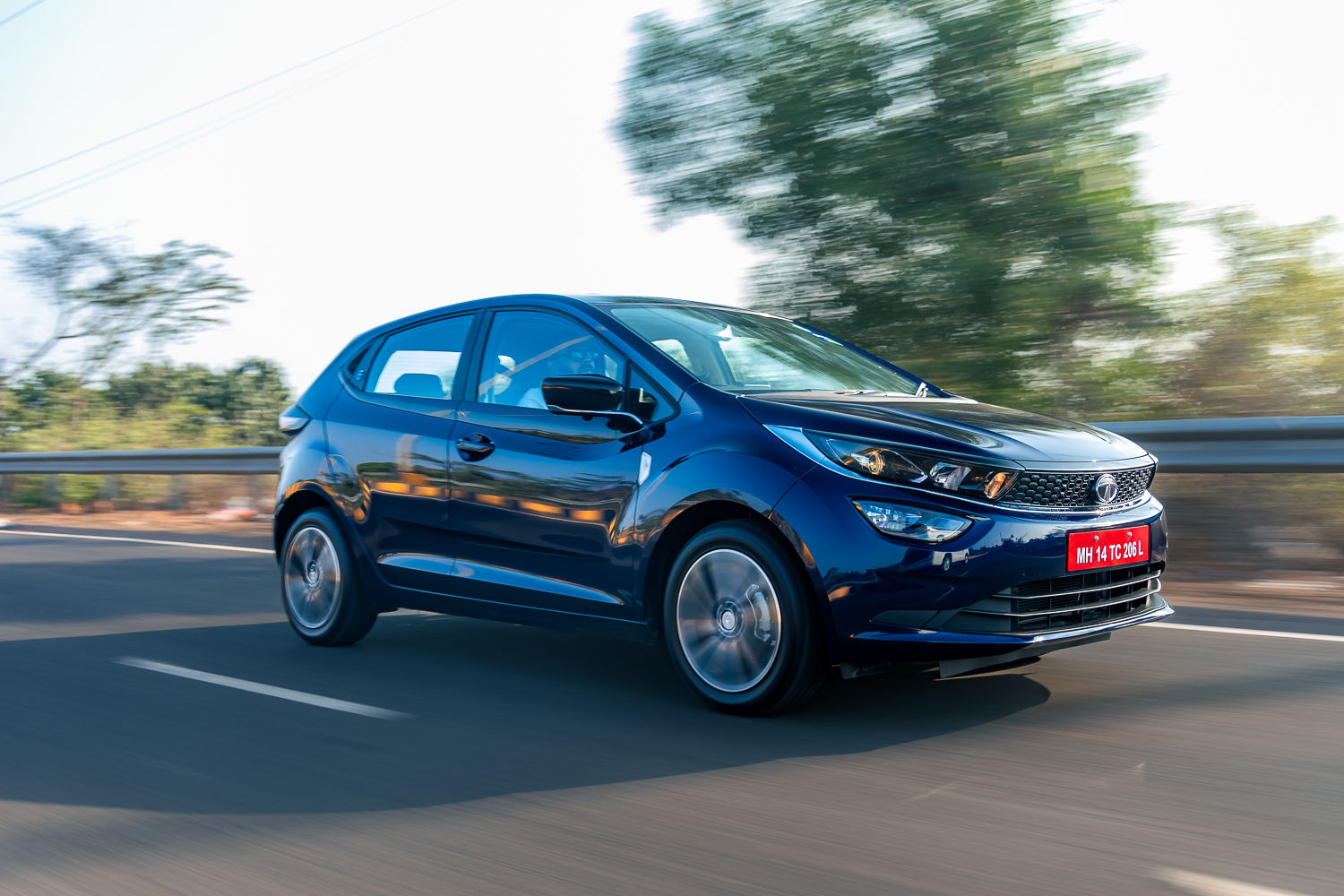Tata Altroz CNG Review: Wholesome!
Published On May 29, 2023 By Arun for Tata Altroz 2020-2023
- 12.3K Views
- Write a comment
The Tata Altroz manages to take some sting and stigma out of CNG car ownership. But at what cost?

Opposite worlds seemingly collide in the Altroz’ universe this time round. All the goodness of the Altroz can now be had with the promise of lower running costs. This is simply an Altroz that happens to run on CNG. Don’t expect an experience that’s biblically different from the regular petrol version. There are a few pointers to bear in mind though. Let’s run through them.
Power Of Choice

Tata has opted to let you choose whether you want a basic CNG hatchback or are willing to pay for the bells and whistles. You can opt for the CNG in almost every variant of the Altroz, right from the base-spec XE to the top-spec XZ+.


A few new features have also made it to the Altroz’ kitty. This includes a sunroof, a wireless charger and an air purifier. You also get a few voice commands to play around with. There are a couple of features missing from the CNG version as well. The 7-inch screen in the instrument cluster is gone and cruise control has been deleted as well. This, we feel, was simply unnecessary.
At the moment, the CNG version costs nearly a lakh more than its petrol-only counterpart. This gap is set to get narrower as soon as the petrol version gets the new features too.
Also Check Out: Tata Altroz CNG vs Rivals: Specifications Compared
Form and Function

The Altroz is based on Tata’s AlfaARC platform that was developed with the intention of electrification and bi-fuel/hybrid applications. No surprise then, that the CNG tanks are neatly tucked away under the boot floor. Tata has been clever to opt for twin 30-litre tanks instead of a single 60-litre tank that would’ve consumed the entirety of the boot.

Tata claims a 210-litre boot space, which is 135 litres down from the petrol version. It’s thoroughly usable, though, and can swallow a medium-sized suitcase and an overnighter with ease. With the parcel tray in place, you’d be forced to store your bags horizontally. But that’s the only compromise here. What we particularly appreciate about the boot, is that the CNG tanks are hidden out of sight completely.
Other than the slightly limited (but still usable) boot space, there’s nothing in terms of practicality that you’re trading off.
Like an Ertiga or an Innova, the spare wheel is tucked away behind the bumper. It’s quite easy to access though, requiring you to loosen a nut located in the boot.
Also Check Out: Tata Altroz CNG Vs Rivals - Price Check
Drive Green

The Altroz can start up directly in CNG mode if required. You have three indicators of the car running on gas: a green light on the switch, a flash of ‘CNG Mode Activated’ text and an orange ‘CNG’ indicator in the instrument cluster. The switch between petrol and CNG is seamless too, as is the case with most CNG vehicles these days. Also, as you’d expect, the Altroz will automatically switch over to petrol/CNG if either one runs too low.
To understand how the car functions with CNG, it’s important to acknowledge that the petrol Altroz wasn’t setting any performance benchmarks to begin with. It felt adequate for city commuting, and just about enough for leisurely highway trips. The CNG apparatus adds an additional 110kg to the Altroz, and takes away some power and torque too.
| Specifications |
Petrol |
CNG |
| Power |
88PS |
73PS |
| Torque |
115Nm |
103.5Nm |
Much to our relief, the sizeable difference in on-paper numbers doesn’t translate into a huge performance gap. If you’re driving a whole lot within city limits you’d do well to benefit from the CNG’s lower running costs. Here’s some quick math:
Assuming the petrol car returns 12kmpl and the CNG returns 15km/kg in the real world, worst case scenario: you will break even within a year and a half if you drive 50km/day; and just about a year if you drive 70km/day.
This is reasonable, considering there aren’t any major compromises if you want a city commuter. You’d be hard-pressed to tell the difference between petrol and CNG mode whilst commuting. Yes, you might need an extra downshift on odd occasions, but the drivability shines through.

The climb to triple digits is almost agonizingly slow, and in-gear acceleration in fourth and fifth from these speeds doesn’t feel particularly quick either. Overtakes most definitely require planning and sometimes you’d be better off switching over to petrol to get the job done. Similarly, steep inclines will require you to downshift to first — unless you’re carrying enough momentum. Here, too, petrol power is the way to go. Both these hiccups are sure to compound with a full passenger and boot load.
As always, the Altroz continues to be a confident highway cruiser and a sharp handler. Tata has reworked the rear suspension to account for the added weight. Ride quality thankfully does not take a hit either — it’s comfortable over most surfaces that you are likely to encounter.
Why Buy?

The reasons to consider the Altroz CNG are quite straightforward: You use your vehicle mostly within the confines of the city, where the lower fuel cost/higher efficiency of the CNG are likely to contribute to your savings. Highway trips in the Altroz CNG are possible, but never at a frantic pace. The proverbial cherry on top is the boot space that’s fairly usable for most weekend getaways.
